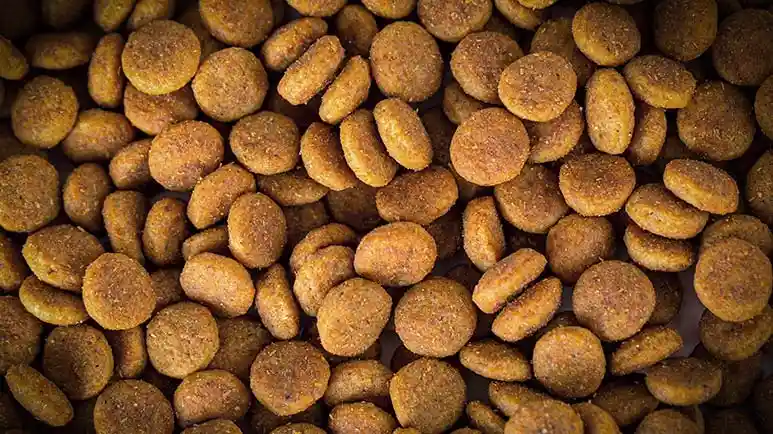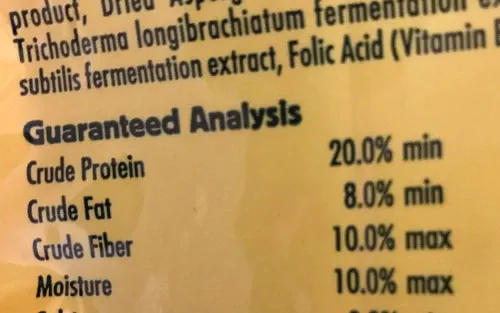One of the Worst Premium Food Purchases You Could Make for Your Pet
It comes with the promise of better health and allure of making a smart choice for your pet. Sadly, it's neither. Worse, they insult your intelligence by omitting key facts they deem too 'confusing' for you. Isn't it time to prove you're smarter than they think?

STORY AT-A-GLANCE
- Grain-free kibble has advanced from a niche market to a mainstream pet food; 44% of dry dog foods and 47% of dry cat foods sold in the U.S. are grain-free
- Since the formation of kibble requires a starchy ingredient, pet food producers have substituted carbohydrates for grains, while keeping pet parents in the dark about the carb content of their formulas
- Many grain-free dry pet foods are loaded with carbs, making the sugar content higher than in non-grain-free formulas
- Carbs convert to sugar in your pet’s body; high-carbohydrate diets have created an epidemic of sugar-related diseases in today’s dogs and cats
- Your best bet to keep your pet healthy is to stop feeding all dry food, and replace it with a nutritionally balanced, species-appropriate diet
Editor's Note: This article is a reprint. It was originally published November 24, 2017.
Recently I ran across an article in a pet food industry journal announcing that grain-free cat and dog food has gone mainstream after several years as a niche market in the larger pet food marketplace.
In fact, according to the Dog and Cat Food Ingredient Center, a database of ingredients contained in commercial dog and cat foods sold in the U.S., 44% of dry dog foods and 47% of dry cat foods are grain-free.1 Taken at face value, and putting aside for a moment all the other problems with feeding kibble, this seems like a good thing. Sadly, it isn't.
The alternative ingredients used in place of grains include pea products (the leader by a large margin), followed by chickpeas, lentils, sweet potatoes and tapioca. The reason these formulas replace grains with starches is because it's literally impossible to manufacture extruded kibble without one or the other.
There has to be some type of starch to make the food sticky enough to form the pieces of kibble. So even if a dry food is grain-free, it's far from carbohydrate free. This is big red flag that I'll discuss shortly, but first let me explain the specific problems with the alternative ingredients listed above.
The Problem With Peas, Pulse Crops and Other Grain Alternatives in Pet Food
When it comes to peas in processed pet food, we're not talking about fresh green or even frozen peas, but dried peas (e.g., split peas or field peas). Dried peas, as well as chickpeas and lentils, are pulse crops. Pulse crops, also called pulses or legumes, are plants with a pod.
Because they are high in fiber, folate, iron (when eaten with a source of vitamin C) and complex carbohydrates, and are also low in fat, pulse crops are considered nutritious for humans by some nutritionists, and not by others. The reason some nutritionists advise keeping legume intake minimal is the same reason I recommend avoiding feeding these foods to pets — the presence of phytates and lectins that are naturally found in legumes.
Phytates are substances that carnivores can't break down because they lack phytase, the enzyme necessary to process phytic acid. Phytates bind minerals (including zinc, iron, calcium and magnesium), leeching them out of your pet's body. Lectins are sticky proteins that when consumed in large quantities may contribute to GI disturbances and leaky gut.
Pet food manufacturers like to use dried peas because they aren't grains (which presents a marketing opportunity), they're gluten-free (another marketing opportunity) and they're about 25% protein, which means they help bump up the stated protein level of the formula.
Plant-based protein is a poor substitute for animal protein in the diets of dogs and cats. It's very important to remember that the total protein percentage on most pet food labels does not reveal how much of that protein is from animals, which is the type of protein cats and dogs require. A large percentage of the total protein in most processed pet food is sourced from plants, not animals.
As for the inclusion of sweet and white potatoes in dry pet food, they're more nutritious than other starches, but they certainly can't turn a biologically inappropriate food into a healthy one. Dry tapioca is essentially a pure starch and non-nutritious for dogs and cats. It's popular with pet food producers because in the extrusion process used to manufacture kibble, tapioca expands extremely well — up to two to three times that of rice.
High-Carb Diets Have Created an Avalanche of Sugar-Related Diseases in Pets
Here's the sad truth about grain-free kibble: It's better for dogs and cats unless the grains have been replaced with other starches, such as the ones I listed above. Replacing grains with other high-glycemic carbohydrates won't help prevent or conquer disease in your pet. And unfortunately, many dry formulas are loaded with carbs, which can lead to blood sugar fluctuations, insulin resistance, obesity, diabetes and other health problems in your pet.
Conventional dry pet foods can exceed 40% to 50% in total carbohydrate content. This means that around half your pet's diet is comprised of nonessential simple sugars. This isn't something many pet parents are aware of because pet food manufacturers aren't required to list carbohydrate content on package labels. Carb intake above the daily needs of dogs and cats (less than 8%) triggers internal enzyme factors to store the excess as body fat.
It has also helped create an epidemic of sugar-related health conditions in pets. The incidence of obesity, cancer, diabetes and several other chronic health conditions is much worse now than it was 20 years ago. And many of these sick pets were weaned onto grain-free foods because their owners assumed they contained less sugar than regular pet foods.
How to Determine the Carbohydrate Content of Grain-Free Pet Food
If you're feeding your dog or cat a grain-free dry food, you'll have to do some quick math to discover the carbohydrate content. This is because carb content is intentionally left off pet food labels so as not to "confuse" pet owners, according to pet food industry insiders.
More likely it's omitted to deceive pet parents into believing many grain-free foods are healthier than other types of pet foods. After all, if pet owners knew the amount of starch they were feeding, they would balk at paying $65.00 or more for a bag of "healthier" grain-free kibble. Here's the formula to determine carb content:
Fiber is the indigestible roughage that doesn't break down into sugar, so you don't have to include it in the formula. Below is an image of the guaranteed analysis on the side of a bag of popular grain-free dog food.

Plugging in our formula:
The average bag of inexpensive, grain-based dog food contains fewer carbohydrates than the grain-free example above. So if, for instance, your dog is fighting cancer or diabetes, she would be eating more sugar with the popular grain-free kibble than the cheaper grain-based formula. Sure, the grain-free food may contain better quality ingredients, but the sugar burden cancels them out.
My Recommendation: Kick All Kibble to the Curb
I recommend pet parents ditch dry food entirely and instead feed a nutritionally balanced, species-appropriate diet, which means food containing high-quality animal protein, moisture, healthy fats and fiber, with low to no starch content.
A nutritionally balanced raw or gently cooked homemade diet is the top choice for pets, but you should only attempt this if you're committed to doing it right. If you don't want to deal with balancing diets at home, choosing a pre-balanced, commercially available raw food is a great choice. A freeze-dried/dehydrated diet is second best. Human-grade canned food is a mid-range choice, but can be hard to find.
And be sure to incorporate a variety of fresh foods into your pet's diet, too. Blueberries, chia and hemp seeds in coconut oil, raw pumpkin seeds, fermented vegetables and kefir can provide your furry family member with a variety of nutrition and flavors.
Sources and References
- PetfoodIndustry.com August 4, 2017
- 1 Dog and Cat Food Ingredient Center











